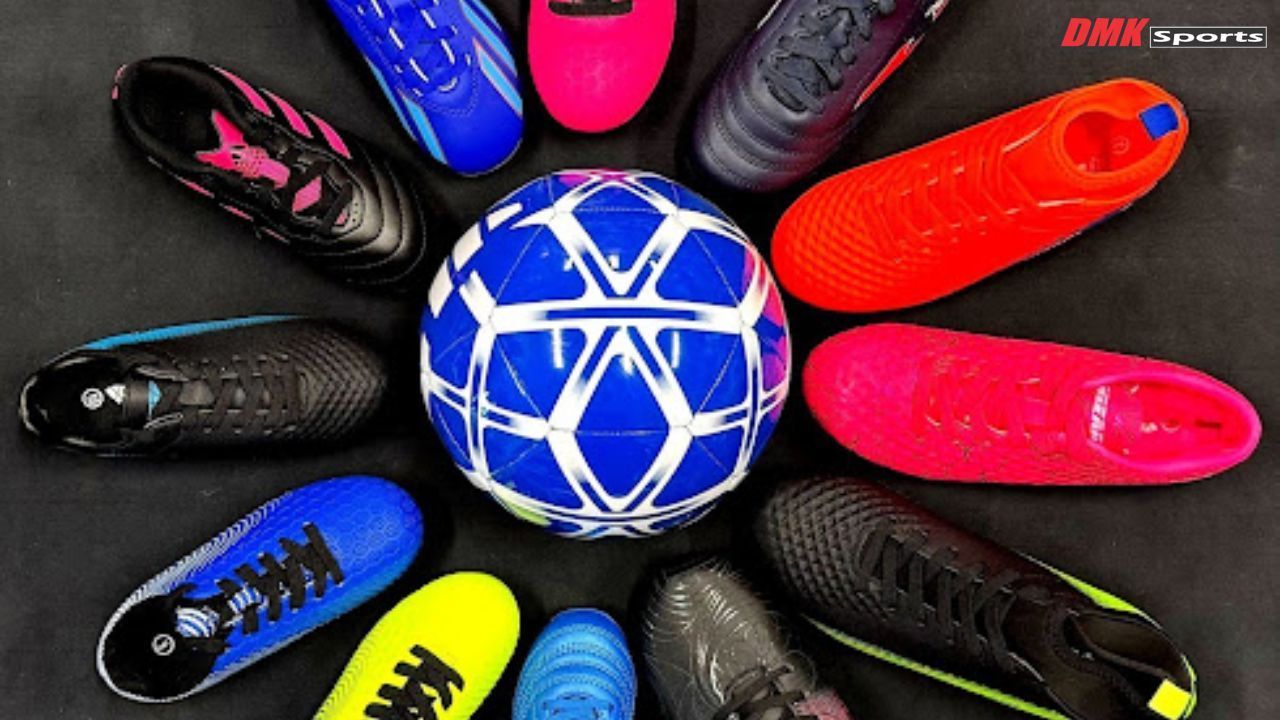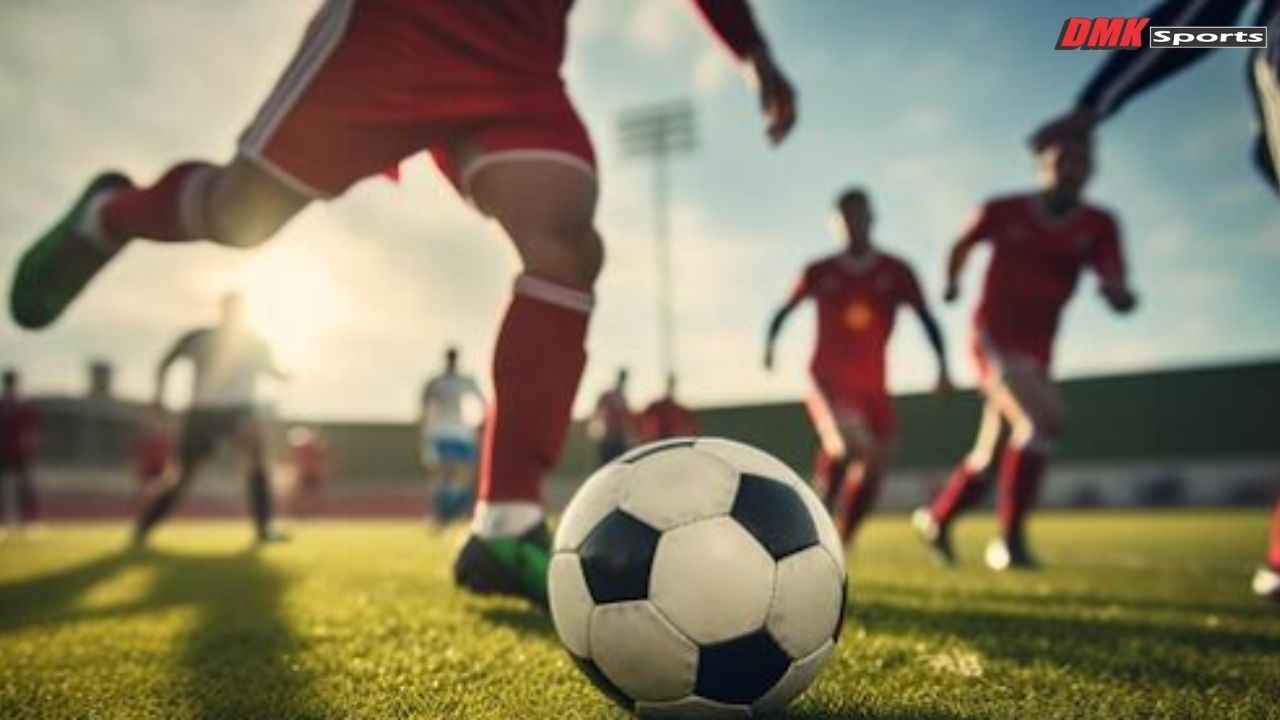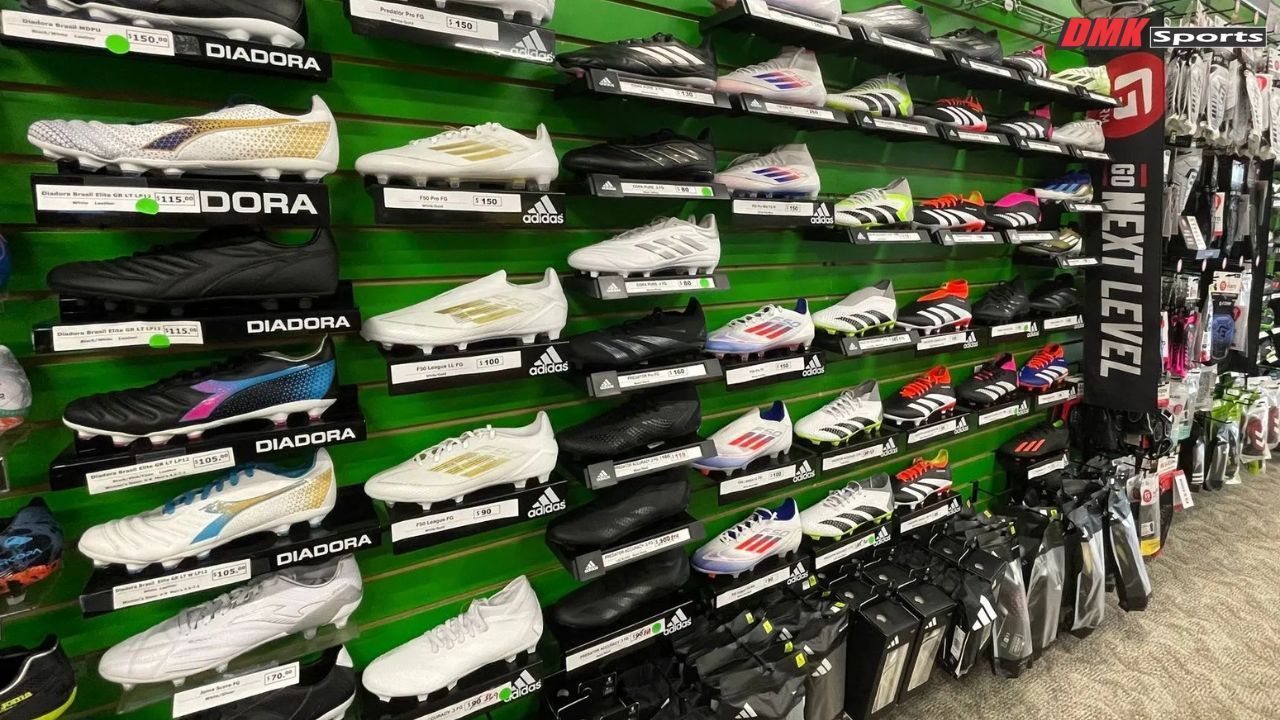Soccer Ball Size by Age: The Ultimate Sizing Guide for Parents & Coaches

Selecting the appropriate soccer ball size for players of different ages is crucial for their skill development and safety while they enjoy practice.
Whether you're a parent purchasing your child's first soccer ball or a coach equipping your team, understanding soccer ball size by age recommendations is essential. This will help young players develop appropriate techniques while preventing potential injuries from using improperly sized equipment.
Why Soccer Ball Size Matters
Using the correct soccer ball size by age isn't just about following regulations, it significantly impacts a player's learning of the game (especially kids) and development. Here's why the right sizing matters:
Skill Development
Players develop their technical skills most effectively when using appropriately sized equipment, simply because it’s designed specifically for their age. On the other hand, younger players using oversized balls often develop improper techniques that become harder to correct later.
Control and Confidence
A properly sized ball allows players to control it effectively, leading to more successful touches and greater confidence. When children struggle with an oversized ball, frustration can quickly diminish their interest in the game.
Safety Considerations
Soccer balls that are too large or heavy for young players can increase the risk of injury, particularly to wrists, arms, and facial areas during heading attempts.
Game Experience
The right soccer ball sizes by age ensure the game scales appropriately, allowing players of all ages to experience soccer in a way that's challenging yet achievable.
Standard Soccer Ball Sizes Explained
Soccer balls come in five standard sizes, each designed for specific age groups and playing formats:
Size 1: Skills Ball (18-20 inches in circumference)
- Weighs approximately 8-10 ounces
- Often called a "mini ball" or "skills ball"
- Used primarily for technical training and skill development
- Not typically used in any official matches
Size 2: Toddler Ball (20-22 inches in circumference)
- Weighs approximately 10-12 ounces
- Designed for very young players aged 3-5 years
- Excellent for introducing basic kicking skills
- Used in some preschool soccer programs
Size 3: Junior Ball (23-24 inches in circumference)
- Weighs approximately 11-12 ounces
- Standard match ball for players aged 5-8 years
- Used in U6, U7, and U8 age groups
- Provides optimal control for smaller players
Size 4: Youth Ball (25-26 inches in circumference)
- Weighs approximately 12-13 ounces
- Standard match ball for players aged 8-12 years
- Used in U9, U10, U11, and U12 age groups
- Bridges the gap between junior and full-size balls
Size 5: Standard Ball (27-28 inches in circumference)
- Weighs approximately 14-16 ounces
- Standard match ball for players aged 13 and older
- Used in adult leagues and professional matches
- FIFA regulation size for international competitions
Comprehensive Soccer Ball Size by Age Chart
For quick reference, here's a detailed soccer ball size age chart based on player age and common league designations:
Age Group: 3–5 years
Soccer Ball Size: Size 1 or 2
League/Division: Pre-K, Toddler
Age Group: 5–8 years
Soccer Ball Size: Size 3
League/Division: U6, U7, U8
Age Group: 8–12 years
Soccer Ball Size: Size 4
League/Division: U9, U10, U11, U12
Age Group: 13+ years
Soccer Ball Size: Size 5
League/Division: U13 and above
This soccer ball size chart by age serves as a general guideline, though specific leagues may have slightly different requirements. Always check with your local soccer organization for their specific regulations.
Soccer Ball Size Recommendations by Age Group
Let's take a deeper look at each age group and the specific considerations for soccer ball sizes for age groups:
Ages 3-5: Size 1 or Size 2
For significantly younger players, a smaller, lighter ball is essential. At this age, children are developing basic motor skills and just learning to kick a ball.
Key considerations:
- Lightweight design reduces frustration
- Softer materials prevent fear of the ball
- Often more colorful to engage young players
- Focus on fun rather than technical development
Recommended: DMK Sports offers specially designedtraining soccer balls in size 1 and 2 that are perfect for introducing the youngest players to the beautiful game.
Ages 5-8: Size 3
As children develop more coordination and strength, they progress to a size 3 ball. This size 3 soccer ball age range is critical for developing fundamental techniques.
Key considerations:
- Small enough for proper foot control
- Light enough for successful passing
- Appropriate for learning basic dribbling techniques
- Suitable for small-sided games (3v3 or 4v4)
Recommended: DMK Sports offers high-quality size 3 soccer balls that provide the perfect balance of durability and performance for this age group.
Ages 8-12: Size 4
The transition to a size 4 ball represents a significant step in a young player's development. This size 4 soccer ball age range allows for more advanced skill development while still accounting for physical limitations.
Key considerations:
- Slightly heavier than size 3 for developing stronger kicks
- Appropriate for learning proper shooting technique
- Suitable for developing tactical awareness
- Used in small-sided games (7v7 or 9v9)
Recommended: For players in this crucial development stage, DMK Sports' size 4 soccer balls offer professional-grade quality at affordable prices.
Ages 13 and Up: Size 5
By age 13, most players have developed sufficient strength and skill to handle a full-size ball. This size 5 soccer ball age marks the transition to the adult game.
Key considerations:
- Official size used in professional matches
- Appropriate weight for developing proper technique
- Suitable for full-sided games (11v11)
- Various constructions available for different playing surfaces
Recommended: DMK Sports' size 5 soccer balls come in various quality levels to suit everything from recreational play to competitive matches.
Special Considerations for Soccer Ball Selection
Beyond just soccer ball size by age group, there are several other factors to consider when selecting the perfect ball:
Playing Surface
Different playing surfaces require different ball characteristics:
- Natural grass: Traditional balls work well
- Artificial turf: Balls with more durable covers stand up to abrasion
- Indoor courts: Special indoor balls with less bounce and more cushioning
- Hard surfaces: Street or freestyle balls with extra durability
Ball Construction Quality
Soccer balls come in different construction qualities:
- Training balls: Durable, cost-effective options for daily practice
- Match balls: Higher quality for official games
- Professional match balls: FIFA-approved for elite competition
Weather Conditions
Consider the typical playing conditions:
- Wet weather: Water-resistant covers prevent water absorption
- Cold conditions: Thermally bonded balls maintain shape better
- Hot conditions: Balls with enhanced air retention prevent deflation
DMK Sports offers specializedsoccer training equipment for all weather conditions, ensuring players can train effectively year-round.
Selecting the Right Soccer Ball for Your Child or Team
When choosing a soccer ball based on age and playing level, consider these additional factors:
Budget Considerations
Quality soccer balls are available at various price points to be affordable for all. DMK Sports offers exceptional value across all price ranges with their comprehensiveequipment selection.
Durability Features
Look for these durability indicators:
- Stitching type: Machine-stitched, hand-stitched, or thermally bonded
- Cover material: PU (polyurethane), PVC, or synthetic leather
- Bladder material: Butyl bladders hold air longer than latex
Special Features
Some balls offer special features for specific needs:
- High-visibility colors: For low-light conditions
- Weight-adjusted balls: For specific skill development
- Winter balls: With bright colors for snowy conditions
- Futsal balls: Low-bounce for indoor play
Frequently Asked Questions About Soccer Ball Sizes
When should my child move up to the next soccer ball size?
Generally, the best bet would be to follow the age guidelines provided by your league. If your child plays in multiple leagues with different requirements, it's usually best to practice with the same size ball they'll use in matches. However, if your child is particularly small or large for their age, you might consider adjusting accordingly.
Can my child practice with a different size ball than they use in games?
While it's best to practice primarily with the same size used in games, some training with different sizes can develop varied skills. Many professional players occasionally train with smaller balls to improve their touch and control.
Are there weight differences within the same size category?
Yes, even within the same size category, balls can vary in weight by an ounce or two. For younger players, choosing a ball at the lighter end of the weight range can help with skill development.
How do I know if my child's soccer ball is properly inflated?
A properly inflated soccer ball should create a slight bounce when dropped from shoulder height (about 4-5 feet). Most balls have a recommended PSI (pounds per square inch) range printed on them, typically between 8.5 and 15.6 PSI.
Do professional players use special soccer balls?
Professional matches use FIFA-approved balls, which must meet specific standards for size, weight, bounce, and water absorption. These high-end balls offer superior flight characteristics and touch, but youth players develop perfectly well using quality recreational or training balls.
Essential Back-to-School Soccer Equipment
As the new school year approaches, ensure your young player has everything they need with DMK Sports'back-to-school soccer essentials. This comprehensive collection includes properly sized soccer balls along with other necessary equipment for school soccer programs.
Soccer Ball Care and Maintenance
To extend the life of your soccer ball, regardless of its size, follow these simple tips:
Proper Inflation
Maintain the ball at the recommended pressure (usually printed on the ball). Over-inflation can damage the seams, while under-inflation affects performance and can lead to damaged panels.
Cleaning Routine
Clean the ball after use, especially when playing on muddy fields. Use a damp cloth with mild soap, avoiding harsh chemicals that can damage the cover.
Storage Guidelines
Store the ball indoors at room temperature. Avoid leaving it in extreme heat (like a car trunk in summer) or cold, which can damage the bladder and affect air retention.
Rotation System
For teams, implement a ball rotation system rather than using the same ball for every practice. This extends the life of your equipment and provides backup when a ball needs inflation or cleaning.
The Impact of Proper Soccer Ball Size on Player Development
Using the correct soccer ball size by age has profound effects on player development:
Technical Development
Players learn proper technique more efficiently with appropriate equipment. The right-sized ball allows for correct foot positioning and body mechanics during fundamental skills like passing, shooting, and dribbling.
Tactical Understanding
As players grow and transition through ball sizes, their tactical understanding develops naturally. The progressive increase in ball size helps players adapt their spatial awareness and decision-making.
Physical Development
Appropriately sized equipment prevents unnecessary strain on developing bodies. Young players can focus on building strength and coordination without having to struggle with oversized equipment.
Increased Confidence
Success breeds confidence. When players can effectively control their ball, they gain confidence that translates to more creativity and risk-taking in their play.
Conclusion: Selecting the Perfect Soccer Ball for Every Age
Choosing the right soccer ball size based on the player’s age is a crucial decision that impacts skill development, safety, and makes the game more fun. By following the guidelines above and considering the specific needs of the player or team, you'll provide your child the optimal equipment for soccer success.
DMK Sports offers a comprehensive range of soccer balls in all sizes, ensuring players of every age have access to quality equipment that enhances their development. From the youngest beginners to seasoned competitive players, having the right-sized ball is the foundation for soccer skill development.
Contact or visit DMK Sports today to find the perfect soccer ball for your age group, along with all the essential training equipment needed to develop into a complete player. Remember, the journey to soccer excellence begins with the right equipment—make sure you're starting with the proper size ball for your age.
Related Posts:










